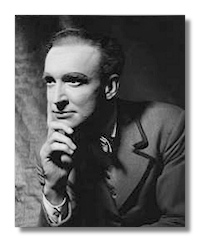
Under Analysis: The Psychology of Tudor's Ballets
By Alastair Macaulay
When the choreographer Antony Tudor, whose centenary is being celebrated this year, moved to America in 1939, the moment could not have been more right. He was known as the psychological choreographer, and he arrived when psychology entered American popular culture. In 1938 Fred Astaire played Ginger Rogers's psychoanalyst in "Carefree"; in 1942 Claude Rains steered Bette Davis back from a nervous breakdown in "Now, Voyager." Later Martha Graham would become yet more famous for the Greek myths she turned into modern-dance psychodramas, but that phase – like Hitchcock's (notably in "Spellbound," 1945) – had not yet arrived.
Back in 1936, however, in none-too-psychology-friendly London, Tudor created "Jardin aux Lilas" (sometimes called "Lilac Garden"), often labeled the first psychological ballet. Nobody played a psychiatrist in it, but its steps, gestures and phrases showed flickering aspects of repression, denial, private longing, heartbreak, personal conflict and hypocrisy, all against a setting both romantic (a garden with lilacs in full bloom at twilight) and conformist (with characters in Edwardian dress, middle-class and formal).
Read more about this at the New York Times website:














